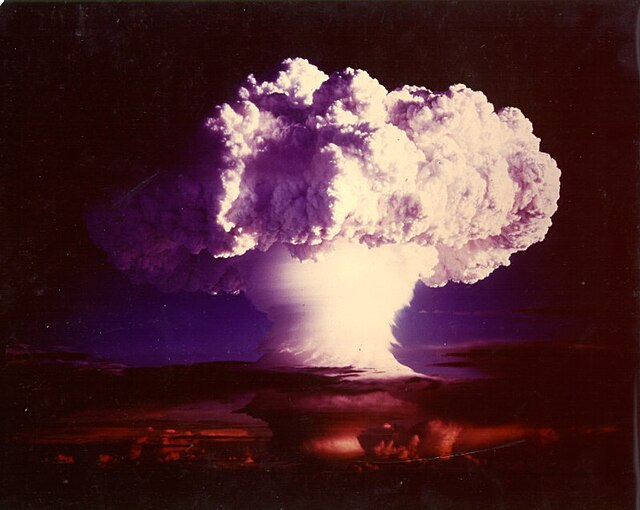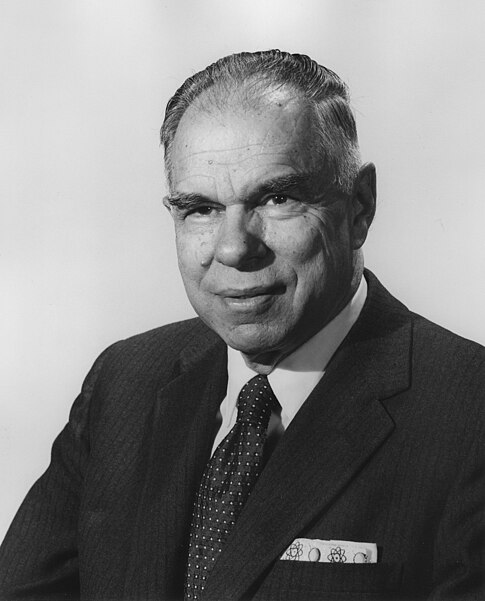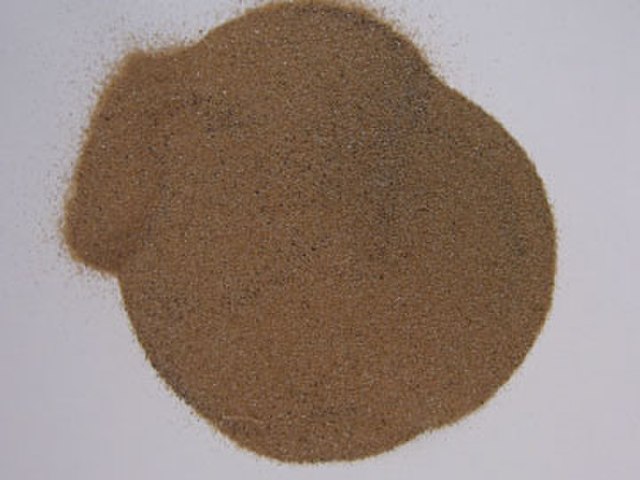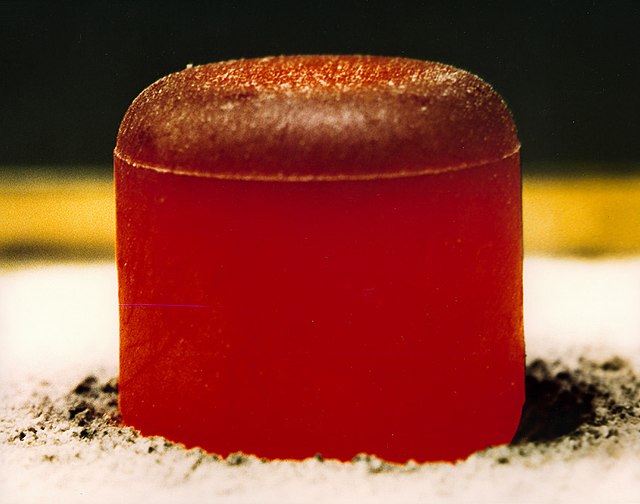Americium is a synthetic chemical element; it has symbol Am and atomic number 95. It is radioactive and a transuranic member of the actinide series in the periodic table, located under the lanthanide element europium and was thus named after the Americas by analogy.
Americium
The 60-inch cyclotron at the Lawrence Radiation Laboratory, University of California, Berkeley, in August 1939
Americium was detected in the fallout from the Ivy Mike nuclear test.
Outside and inside view of an americium-based smoke detector
The actinide or actinoid series encompasses at least the 14 metallic chemical elements in the 5f series, with atomic numbers from 89 to 102, actinium through nobelium. The actinide series derives its name from the first element in the series, actinium. The informal chemical symbol An is used in general discussions of actinide chemistry to refer to any actinide.
Enrico Fermi suggested the existence of transuranium elements in 1934.
Glenn T. Seaborg and his group at the University of California at Berkeley synthesized Pu, Am, Cm, Bk, Cf, Es, Fm, Md, No and element 106, which was later named seaborgium in his honor while he was still living. They also synthesized more than a hundred actinide isotopes.
Monazite: a major thorium mineral
A pellet of 238PuO2 to be used in a radioisotope thermoelectric generator for either the Cassini or Galileo mission. The pellet produces 62 watts of heat and glows because of the heat generated by the radioactive decay (primarily α). Photo is taken after insulating the pellet under a graphite blanket for minutes and removing the blanket.








